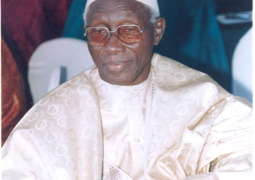Mr Sanyang was speaking recently at the National Assembly when the GBoS activity report 2013 was adopted by the PAC/PEC.
“The Bureau is meeting the training costs of these five with its subvented resources,” he stated, and hoped in the coming years, more staff within the middle and junior cadre would secure a similar admission and request for the bureau’s funding.
He said over the years, GBoS was operating with a skeletal staff at the professional level, which impacted negatively on the performance of the bureau in producing reliable and timely official statistics.
To bridge this capacity gap, particularly in economic statistics, he said, the National Statistics Council recruited eleven young graduates including two females in the quarter of 2013 and, of these, eight occupied positions in the Economic Statistics Division, one in the Directorate of Coordination, Dissemination and Quality, one in the Directorate of IT and one in the Cartography unit.
During 2013, he added, two young statisticians left for overseas training and one of these was on a Partnership in Population and Development (PPD) in South Africa, whilst the other was self-sponsored and on a study leave with salary in the UK.
Mr Sanyang further informed deputies that in 2013, the National Accounts Directorate continued with its routine task of producing the annual Gross Domestic Product (GDP) for The Gambia by collecting information from the various sectors of the economy on output of goods and services either in monetary values, or on the quantity of goods produced.
Collection of data was followed by compilation for each economic activity in line with the guidelines of the 1993 United Nations System Accounts (1993 UNSNA).
They provide key information on the structure and development of the economy, he said, adding: “Every year, the directorate releases preliminary GDP estimates by November, which are revised by March of the following year.”
“The final estimates are released six months after and updated on the GBoS website together with a methodological guide for users.”
Read Other Articles In Article (Archive)
The unending land problems
Feb 26, 2013, 10:03 AM



